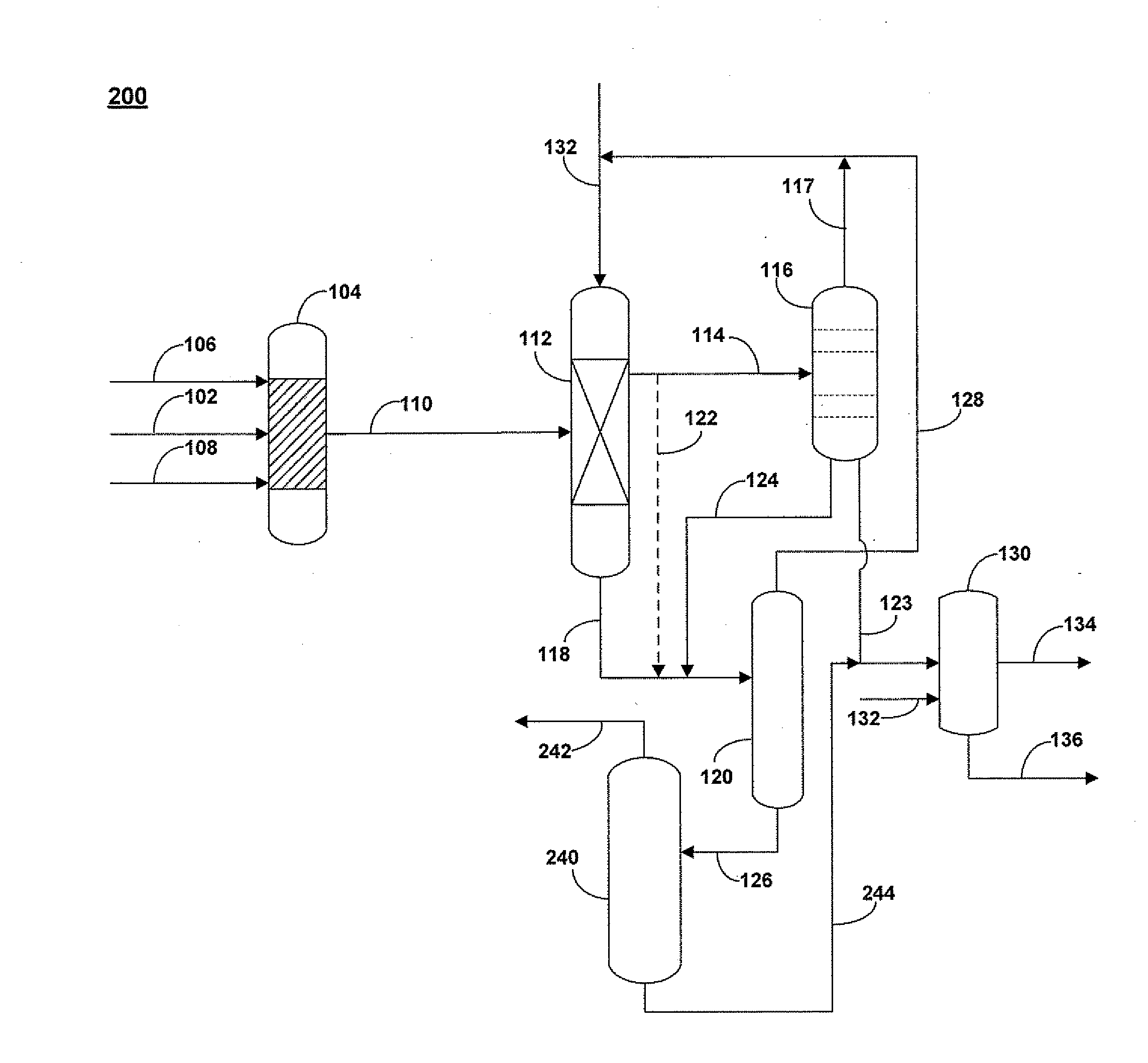Desulfurization and Sulfone Removal Using A Coker
a technology of desulfurization and coker, which is applied in the petroleum industry, coking carbonaceous materials, and refining with oxygen compounds, etc., can solve the problems of high vapor pressure, high vapor pressure, and high cost, and achieve high purity
- Summary
- Abstract
- Description
- Claims
- Application Information
AI Technical Summary
Problems solved by technology
Method used
Image
Examples
example
[0059]In one example, a hydrotreated straight run diesel stream 102 containing 500 ppmw of elemental sulfur 0.28 W % of organic sulfur density of 0.85 Kg / lt was oxidatively desulfurized. The oxidized and extracted sulfur compounds are mixed with a residue stream feed stream 136, properties of which are shown in Table 1, and the combined stream was supplied to the coker.
TABLE 1PropertyValueAPI Gravity4.6Specific Gravity1.04Sulfur Content, wt. %5.42Nitrogen Content, wt. %0.437Oxygen Content, wt. %0.1CCR, wt. %24.6C5 - Asphaltenes, wt. %23.5Nickel, ppmw44Vanadium, ppmw162
[0060]The reaction conditions were as follows: the mole ratio of hydrogen peroxide to sulfur was 4:1. The catalyst was a Molybdenum (VI) based catalyst. The reaction time was 30 minutes. The temperature was maintained at about 80° C., and the pressure was maintained at about 1 Kg / cm2. The coker was operated at a temperature of about 482° C. and a pressure of about 1 Kg / cm2. Material balances for the oxidation step are ...
PUM
| Property | Measurement | Unit |
|---|---|---|
| pressure | aaaaa | aaaaa |
| temperature | aaaaa | aaaaa |
| temperature | aaaaa | aaaaa |
Abstract
Description
Claims
Application Information
 Login to View More
Login to View More - R&D
- Intellectual Property
- Life Sciences
- Materials
- Tech Scout
- Unparalleled Data Quality
- Higher Quality Content
- 60% Fewer Hallucinations
Browse by: Latest US Patents, China's latest patents, Technical Efficacy Thesaurus, Application Domain, Technology Topic, Popular Technical Reports.
© 2025 PatSnap. All rights reserved.Legal|Privacy policy|Modern Slavery Act Transparency Statement|Sitemap|About US| Contact US: help@patsnap.com



